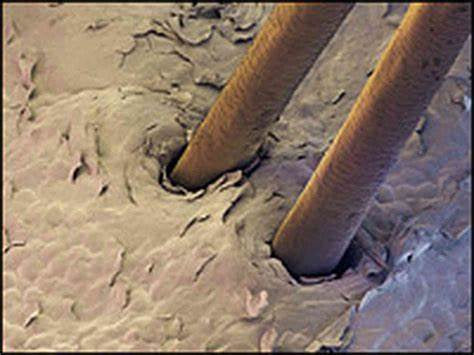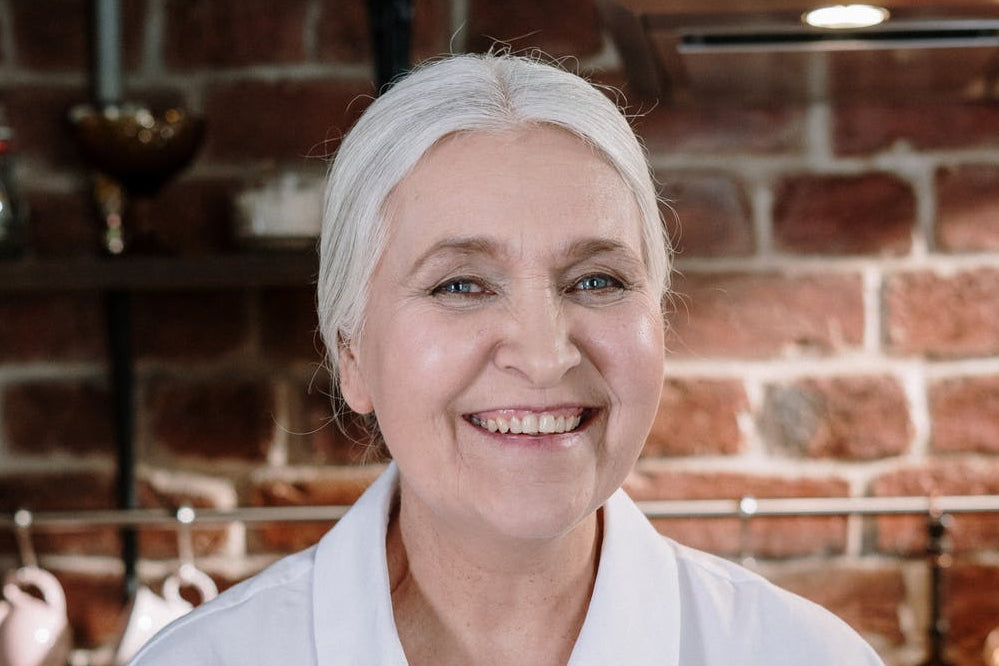To understand how hair grows, we first need to look at its parts. Hair is made up of two parts: the follicle and the shaft.
The shaft grows from the follicle, which is the root of the hair located beneath the skin. There are around 100,000 hair follicles on the scalp alone, and five million hair follicles on the body.
The hair follicle itself is made up of the papilla and the bulb. The papilla contains tiny blood vessels that deliver blood supply to the hair follicle. The papilla nourishes the hair follicle with the necessary nutrients for hair growth. The bulb, which surrounds the papilla, is where the hairs’ cells divide. Cells of the bulb divide much faster than the other cells in the human body.
The hair shaft is the visible part of the hair. The hair shaft is made up of a hard protein called keratin and a scale-like outer protective layer called the cuticle. Hair shafts are actually dead, which is why it doesn’t hurt to get a haircut!

Understanding the Hair Growth Cycle
As new hair is manufactured in the follicle, it pushes out the hair shaft, creating longer hair. Hair grows about 0.3mm to 0.4mm each day, which adds up to around six inches per year.
However, not all of the hair follicles are growing new hair at the same time. Hair growth occurs in a cycle. At any given time, each strand is in a different part of the cycle. It’s a good thing that each of our hair’s cycles are not in sync, otherwise we would shed all of our hair at once.

The Phases of the Hair Growth Cycle
The hair cycle is made up of four phases: the anagen phase, the catagen phase, the telogen phase and the exogen phase.
Anagen (Hair Growth) Phase
The anagen, or growing, phase is the first part of the hair growth cycle. During the anagen phase, cells of the bulb divide rapidly, resulting in new hair growth. Eighty to 90% of hair follicles are in the anagen phase at any given time.
The anagen phase lasts somewhere between two and seven years. The length of the anagen phase determines the maximum hair length. For example, people who have very long hair have a very long anagen phase. Eyelashes, eyebrows, and body hair have shorter growth phases than for the hair on your head, which is why they are much shorter than scalp hair. There are many factors that influence the length of the anagen phase, including genetics, nutrition, age and overall health.
Catagen (Transition) Phase
After the hair growth phase enters the catagen phase. This short, transitional phase only lasts two to three weeks. During the catagen phase, the hair stops growing and detaches itself from the blood supply. The hair becomes what is known as a club hair.
Telogen (Resting) Phase
The telogen, or resting, phase follows the catagen phase. During the telogen phase, the club hair rests while a new hair begins to grow beneath it. This new hair will eventually take the place of the club hair. The telogen phase lasts for three months, and 10-15% of all hairs are in this phase at any one time.
Exogen (Hair Shedding) Phase
The exogen, or hair shedding, phase is the last part of the hair cycle. During the exogen phase, the resting club hair detaches and falls out. Every hair eventually sheds, and it’s completely normal to lose 50 to 100 hairs each day.
In fact, the exogen phase is why you’ll frequently see hairs in your shower drain or on your hair brush. You should only be concerned if there’s a sudden change and many more hairs than usual are falling out.
After the exogen phase, the follicle then returns to the anagen phase and the cycle repeats.
Hair Loss
Hair shedding is a natural and necessary part of the hair growth cycle. However, excessive shedding can occur for a variety of reasons. Many types of hair loss happen when more follicles than normal go from anagen phase to the catagen phase. When these hairs reach the exogen phase and fall out, hair will appear thinner.
Clinically proven HairMax Laser Devices uses safe, nourishing low level laser light energy to stimulate the hair follicles at a cellular level. This helps to promote hair growth and extend your hair’s natural growth cycle. Your hair will grow fuller, denser, longer and stronger!




Share:
Quick and Easy Hair Styling Tips
Natural oils and hair health?